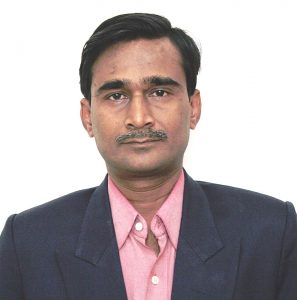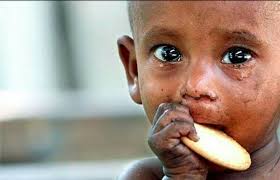 By Nageshwar Patnaik in Bhubaneswar, April 17, 2023: “All animals are equal, but some animals are more equal than others.” A quote from ‘Animal Farm’- a magnificent piece of fiction written by George Orwell way back in 1945, explains disparities that exist in society. Even to-day, it remains relevant to contemporary social/political conditions in our country, India.
By Nageshwar Patnaik in Bhubaneswar, April 17, 2023: “All animals are equal, but some animals are more equal than others.” A quote from ‘Animal Farm’- a magnificent piece of fiction written by George Orwell way back in 1945, explains disparities that exist in society. Even to-day, it remains relevant to contemporary social/political conditions in our country, India.
The famous quote has a déjà vu ring to it. This happens to be a most profound observation because it relates to the core of human nature. There have been historical campaigns across the countries in support of such issues as ‘racial equality’, ‘gender equality’ and ‘caste equity’ et al. But like the typical quest for the defence of ‘human rights’ these are lost causes and nothing ever comes out in the long run. The truism is that ‘inequality’ rather than ‘equality’ comes natural to human nature.
There are high levels of inequality in the world and that inequality is getting worse. Inequality is one of the main drivers of social tension. For those of us who believe in a more just and equal world, reality is a relentless test of our optimism. The global picture is even grimmer. According to the World Food Programme, as many as 828 million people are unsure of where their next meal is coming from, despite there being more than enough food to feed every human being,
The poorest half of the global population owns just €2,900 (in purchasing power parity) per adult, while the top 10 percent owns roughly 190 times as much. Income inequalities are not much better. The richest 10 percent today snap up 52 percent of all income. The poorest half gets just 8.5 percent, says the World Inequality Report, 2022. It ranks India as one of the most unequal countries in the world. The ratio between the top 10% to the bottom 50% income gap stands at 22, making it among the most unequal countries. India also scores very less in the transparency index, with a score of 5.5 out of 20.
Billionaires have seen extraordinary increases in their wealth. During the pandemic and cost-of-living crisis years since 2020, $26 trillion (63 percent) of all new wealth was captured by the richest 1 percent, while $16 trillion (37 percent) went to the rest of the world put together.
 Not surprisingly, India stands out as a “poor and very unequal country, with an affluent elite”, where the top 10% holds 57% of the total national income, including 22% held by the top 1%, while the bottom 50% holds just 13% in 2021, according to the Report. There are large disparities within all countries between the most well-off and the rest.
Not surprisingly, India stands out as a “poor and very unequal country, with an affluent elite”, where the top 10% holds 57% of the total national income, including 22% held by the top 1%, while the bottom 50% holds just 13% in 2021, according to the Report. There are large disparities within all countries between the most well-off and the rest.
India’s share of the world’s extreme poor is higher than its share of the world population. The country accounts for 139 million of the total 689 million people (20.17%) living in extreme poverty in 2017 (World Bank 2020), with its population being 17.8% of the world population (World Bank 2019).
The share of the top 1% accounts for 6-7% of the total incomes earned, while the top 10% accounts for one-third of all incomes earned, according to a report, “State of Inequality in India’, 2022. Even the Competitiveness Roadmap for India@100 showed that inequality in India has increased sharply since 2000 in contrast to most of the other countries in the world.
Needless to say that poverty and social discrimination are the main reasons for inequality. Social discrimination based on caste and gender in India leads to treating people without any dignity. Even after 75 years of Independence, the upper caste domination in our country is quite evident with India’s upper caste households earning nearly 47% more than the national average annual household income, the top 10% within these castes owned 60% of the wealth within the group in 2012, as per the World Inequality Database.
Even though the constitution has protected the rights of oppressed, even though the revolutionaries sacrificed their lives for equality, still they face discrimination on daily basis may be the degree has decreased but not the oppression.
Dr. Bhīmrao Babasaheb Ramji Ambedkar, a revolutionary who challenged the social order where the contradiction of caste and class enjoyed a prominent role through centuries. Dr. Ambedkar battled to change the existing social order which stood upon caste and class and tried to plant the seed of social justice’ by advocating various issues pertaining to plight of caste system and untouchability, human rights, labourers, women rights and above all the Indian politics.
 Unlike Gandhi, who advocated for reforming the caste system by abolishing untouchability, Dr Ambedkar held a more radical view which rejected the institution of caste itself. He saw the reformism advocated by contemporary upper caste Hindus as inadequate to undo millennia of discrimination. According to him, any revolt against the caste system would only be possible after the oppressed themselves rejected their condition and oppression as being divinely ordained.
Unlike Gandhi, who advocated for reforming the caste system by abolishing untouchability, Dr Ambedkar held a more radical view which rejected the institution of caste itself. He saw the reformism advocated by contemporary upper caste Hindus as inadequate to undo millennia of discrimination. According to him, any revolt against the caste system would only be possible after the oppressed themselves rejected their condition and oppression as being divinely ordained.
Ambedkar’s political programme emphasised on lower castes obtaining political power. He suggested separate electorates as the form of affirmative action to empower lower castes. Gandhi, however, opposed separate electorate as it would give a handle to the Britishers exploit internal divisions in Indian society for their own purposes. Separate electorates, according to him, would only help the British ‘divide and rule’.
Ambedkar finally succumbed to Gandhi’s pressure, inking what would be known as the Poona Pact. The pact secured reservations for lower castes but put the question of separate electorates to bed.
It is true that to-day poverty has fallen, but social inequality in India has increased reinforcing the dictum that some are more equal than others.
Hopefully, the ‘Competitiveness Roadmap for India@100’ will guide the path of India to become a higher-income economy by 2047, when the country will mark the 100th year of Independence.



Leave a Reply
Be the First to Comment!